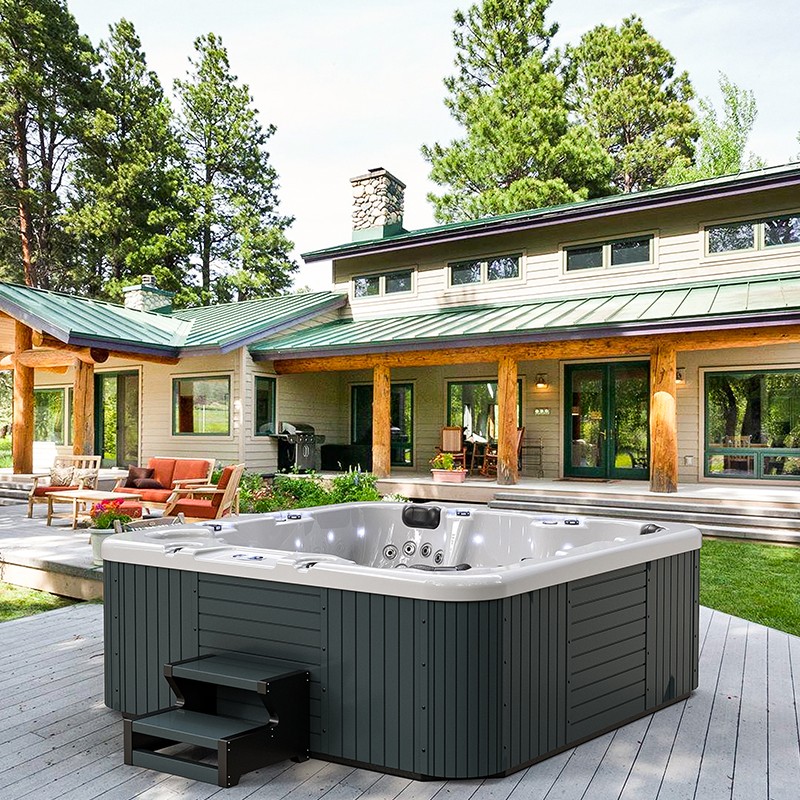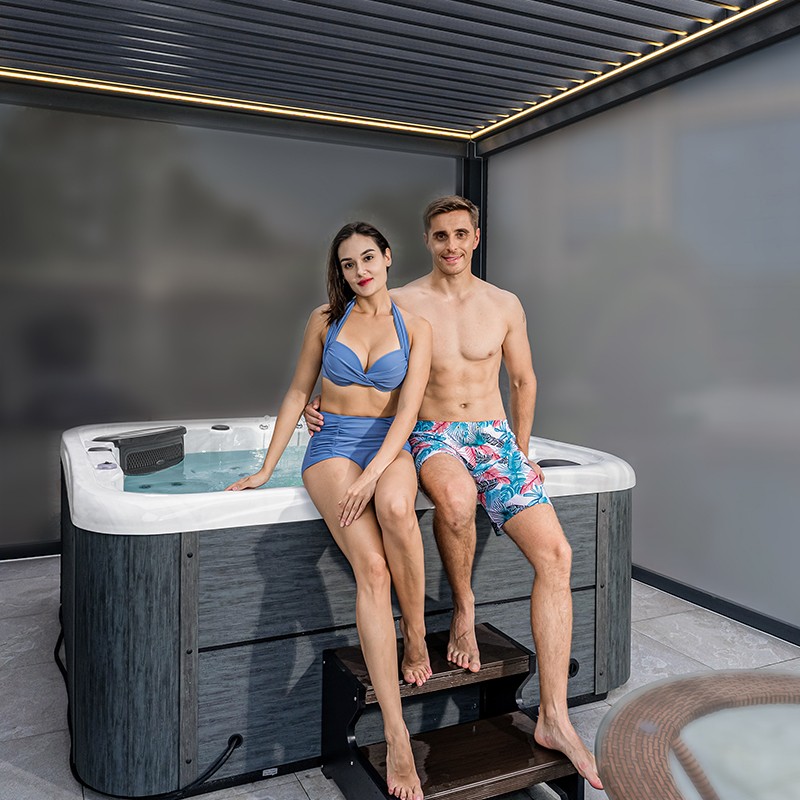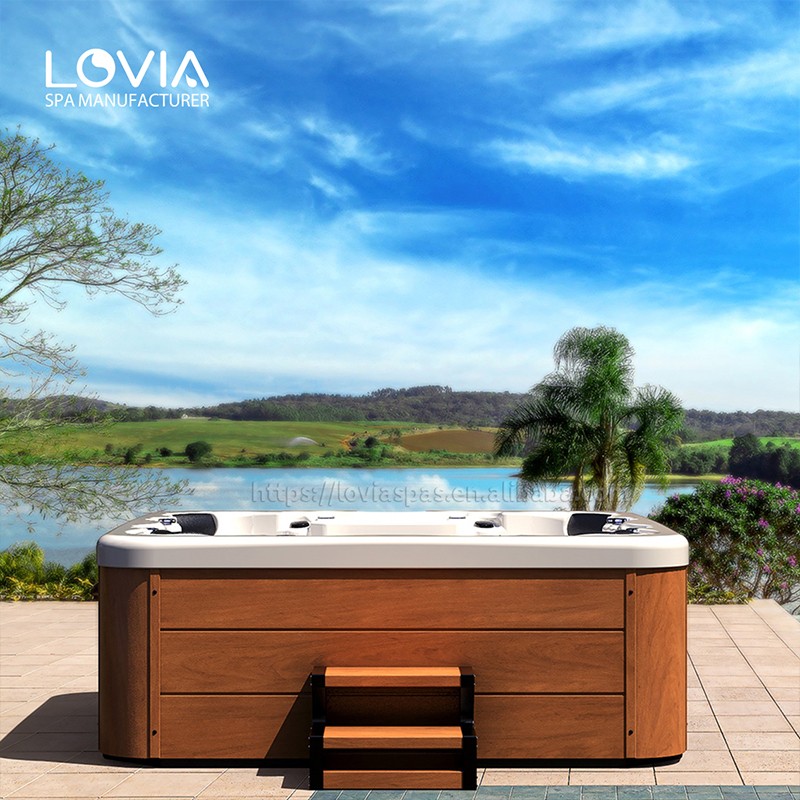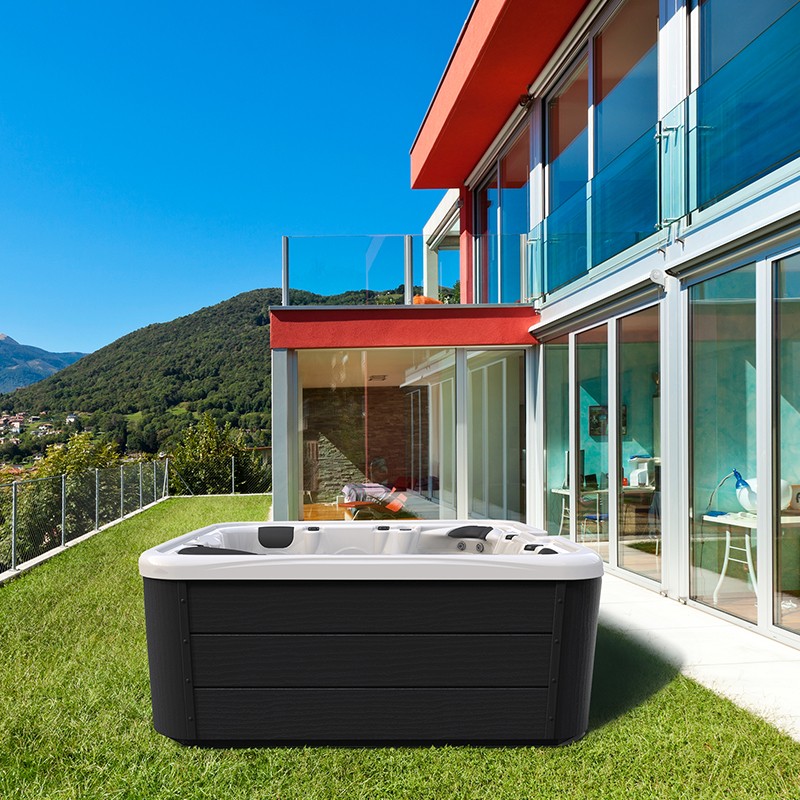
Will a spa hot tub increase your insurance premium?
2025-09-12 15:30As modern homeowners seek to enhance their comfort and wellness, spa hot tubs have become a key option for many homeowners seeking relaxation and wellness. However, as a home feature involving water, electricity, structural loads, and user safety, spa hot tubs also introduce new risks. These risks may impact homeowners' assessment criteria and, consequently, their insurance premiums.
So, the question is: Does installing a spa hot tub necessarily increase your insurance premiums? To answer this question scientifically and systematically, this article will provide an in-depth analysis from the following perspectives:

What are the common types of spa hot tubs?
A "spa hot tub" generally refers to a freestanding bathtub equipped with hydromassage features, a heating system, and a circulating filtration system. It is typically installed outdoors or in a dedicated indoor space and is used for personal or family relaxation, to relieve muscle aches, and to improve sleep quality.
Common types of spa hot tubs include:
· Built-in hot tubs: fixed to the ground or on a deck;
· Portable hot tubs: movable, with a single-piece housing;
· Customized luxury spa tubs: with integrated audio, LED lighting, and self-cleaning features;
· Outdoor lap pool spa hot tubs: combining swimming and massage functions in a larger package.
While these devices can significantly improve quality of life, insurance companies consider them a potential risk due to the high temperatures, humidity, electricity, and water pressure involved.

The Connection Between Spa Hot Tubs and Homeowners Insurance
Homeowners’ insurance typically consists of several components, including coverage for:
· Dwelling coverage;
· Personal property coverage;
· Liability coverage;
· Medical payments to others for injuries to guests;
· Other structures;
· Loss of use coverage.
Spa hot tubs primarily impact insurance coverage in two areas:
· Home Structure and Appurtenances: If a spa hot tub is a permanent structure, it will be covered under the "Other Structures" policy.
· Personal Liability: If a user slips and is injured in the tub, or if a child drowns, the homeowner may be liable for substantial damages.
Thus, a spa hot tub does not automatically increase insurance premiums, but as a risk factor, it may prompt insurers to reassess premiums.

Spa Hot Tubs: Major Risk Factors That May Increase Insurance Premiums
Installing a spa hot tub is not inherently risky, but the following factors significantly increase the likelihood of premium increases:
1. Potential Personal Injury Risks
Slips, burns, water cramps, and children accidentally entering the tub are all possible accidents. Insurance companies place great emphasis on "foreseeable safety hazards." Improper installation without proper safeguards may result in a high-risk rating.
2. Fire or Electrical Failures
Improper installation of electric heaters, ozone systems, and lighting modules poses the risk of short circuits, fires, or power outages. Whether the electrical system installation complies with national or local regulations is a key area of focus for insurance companies.
3. Structural damage caused by leaks
Spa hot tubs are heavy and subject to significant water pressure. If the base structure is weak or the equipment is aging, this can easily lead to foundation sinking, wood corrosion, mold, and other problems. These structural issues can result in an increase in homeowners' insurance coverage or the need for additional coverage.
4. Inadequate safety features
The lack of childproof covers, fences, alarms, or locking mechanisms is considered a high-risk condition.
In summary, risk itself doesn't necessarily increase insurance premiums; it's how insurers assess these risks that determines whether premiums are increased or exclusions are added.
Key factors insurance companies consider when evaluating spa hot tubs
Insurance companies typically examine spa hot tubs based on the following criteria:
Evaluation Dimensions | Content Description |
| Installation Type | Fixed built-in vs. portable: Fixed structures have a greater impact on property appraisal value |
| Location | Outdoor vs. indoor: Indoor risks are higher (leakage, humidity) |
| Maintenance Frequency | Regular cleaning and inspection: Lack of maintenance records increases risk |
| Electrical Safety | Is the installation certified and grounding protected? |
| Protective Devices | Are there fences, non-slip steps, locked covers, etc.? |
| Frequency and Number of Users | Frequent use may increase the probability of accidents |
| Water Quality Management | If bacterial infection occurs, claims may be disputed |
| Whether the Homeowner Notified the Insurance Company | Failure to declare prior to installation may result in future claims denial |
The key factors are compliance, safety, and controllability.

Adjustable Factors Affecting Insurance Premiums and Ways to Reduce Costs
Not all homeowners who install a spa hot tub will experience an insurance premium increase. The following methods can effectively manage risk and maintain or reduce premiums:
1. Proactively Report to Your Insurance Company
Proactively reporting the installation demonstrates transparency and integrity, building trust and avoiding future claims denials due to "failure to disclose."
2. Providing Proof of Professional Installation
If the installation is completed by a certified contractor and passes local inspection standards, this can be considered a risk reduction measure.
3. Installing Safety Equipment
Fences, cover locks, anti-slip steps, and water temperature alarms can significantly reduce risks for children or the elderly, and some insurance companies even offer discounts.
4. Raising Your Deductible
Moderately increasing your deductible can offset some of the trend toward higher premiums.
5. Bundling Other Policies
Packaging your home insurance with other policies, such as auto and life insurance, can help spread the risk across your overall premium.
Are spa hot tubs covered under standard policies?
Most standard homeowners insurance policies don't automatically cover the following types of losses:
· Accidents caused by personal negligence (e.g., burns from setting the water temperature too high);
· Aging or improperly maintained equipment (e.g., broken showerheads, malfunctioning heaters);
· Commercial use (if using a B&B or a for-profit massage parlor);
· Damage caused by flooding (additional flood insurance is required).
Therefore, if you have a spa hot tub installed, you should check the "Attached Structures," "Liability," and "Personal Property" sections of your policy to see if they cover the related losses.
If not, your insurance company may recommend adding:
· Schedule of additional structures;
· Personal liability umbrella policy;
· Equipment breakdown coverage.
Are your spa systems compatible with various electrical standards worldwide?
Yes, we manufacture spa systems compatible with 110V/220V, 50Hz/60Hz, suitable for USA, Europe, Australia, Middle East, and other regions. We customize plug types and control systems based on your local standard. Let us know your destination country, and we’ll prepare the appropriate configuration. All models include safety certifications and are ready for export.
